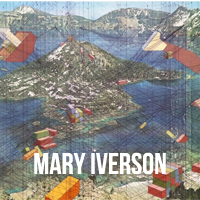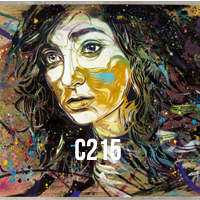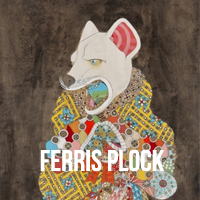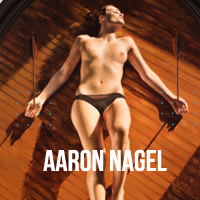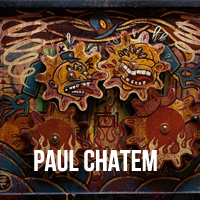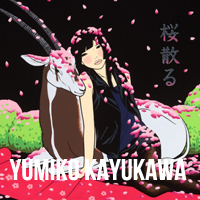Is 6th Street the New Seventh Ave?
|
Let’s keep Sixth Street moving in this direction.
San Francisco is the spiritual home of America’s blossoming Slow Food movement. Could Slow Fashion be the next frontier? |
|||
posted on February 25, 2024 |
|||

|
||
|
Imagine a San Francisco Fashion Week on a grand scale: bright lights; tents on the sprawling lawns outside the de Young Museum; industry A-listers—the likes of Anna Wintour, Peter Nordstrom, Michael Kors—descending upon the city. Sitting elbow-to-elbow along the catwalk, they await the parade of models wearing designs by some of San Francisco’s own: Derek Lam, Alexander Wang and Erin Fetherston among them. In between going from shows to parties to after-parties, enterprising fashion editors and buyers hail cabs or brave Muni to visit small studios and warehouses in the city’s bustling Sixth Street Fashion District. Here, amid the workshops and manufacturing facilities that have returned to this neighborhood, emerging designers are presenting their own collections in smaller, off-venue fashion shows, where said editors and buyers are vying to discover the next Peter Som. And why not? This pocket-size metropolis is teeming with fresh design talent. Could this really, one day, be San Francisco? Sure, San Francisco may be relatively small, and we may have a ways to go before completely shaking our hippie reputation. But the city also has five big schools with strong fashion programs, eager young designers who would probably love to live and work here, a thriving arts scene and a relatively young population with plenty of disposable income. And yet, despite the fact that such national brands as Esprit, Bebe, Levi’s and Gap were founded here, SF has never managed to sustain a real fashion industry. Even L.A.—thanks to its denim craze, solid manufacturing base and red-carpet trendsetting—has San Francisco beat as a fashion center. Bay Area natives Lam, Wang, Fetherston and Som have all had to relocate to the Big Apple to make it commercially. This could be the moment, though, when San Francisco finally stakes out its own fashion territory: local, organic, green, artisanal, ethically produced, sustainable … sound familiar? They’re the same qualities we prize in food, and they’re the values with which the Bay Area has become synonymous. Could this be the future of San Francisco fashion? To answer that, one needs first to explore why, exactly, San Francisco hasn’t yet made it as a fashion capital—and it’s faced more than a few roadblocks. Listen to what those commercially successful designers who still call the Bay Area home say about working in San Francisco: “You can do it, but you won’t have as many resources,” says women’s-wear designer Julie Chaiken, who, back in 1994, founded her eponymous ready-to-wear label here. While SF once did have a thriving manufacturing base, the apparel factories that supported the city’s large-scale retailers eventually disappeared, supplanted by offshore producers. Then, during the dot-com bubble, skyrocketing rents in light-industrial districts such as SoMa drove most small-scale clothing makers, on which local designers relied, to Oakland, Daly City and South San Francisco—or out of business entirely. “In terms of manufacturing and raw sourcing, in New York or even in L.A., everyone is right there,” Chaiken says. “If I need a button, there are 50 people to go to just for buttons.” Couture designer Colleen Quen has also managed to succeed in the Bay Area. But after 22 years working in the fashion industry, she says, she’s had to make her own compromises. “I can only hire a few seamstresses, because it’s so expensive and I’m still so small,” says Quen, who relies upon traditional methods of French couture handwork to construct her dramatic evening gowns. “I do everything else, pretty much. It’s hard to survive, but I have a good group of patrons who support me—that’s enough right now.” Then there’s the issue of media exposure and marketing. “The New York and European press define top fashion—and they aren’t looking to San Francisco,” says Chaiken, who lives in Marin and has a satellite office in San Francisco’s Financial District, but travels frequently and does most of her business through her showroom in NYC. “It depends on what you’re trying to do,” she says, “but if you’re a designer trying to create a national label on this level—and you live here—you still have to go to the major marketing centers to sell and market your product.” Others in the industry point out that even if the rest of the world wanted to focus on the San Francisco fashion community, they’d be hard-pressed to find it. “There’s no defined retail hub here,” says Cheryl Locke, fashion-journalism coordinator at the Academy of Art University. “Boutiques are scattered throughout so many neighborhoods. From a retail point of view, independent designers would be more successful if there was a central place to find them.” |


